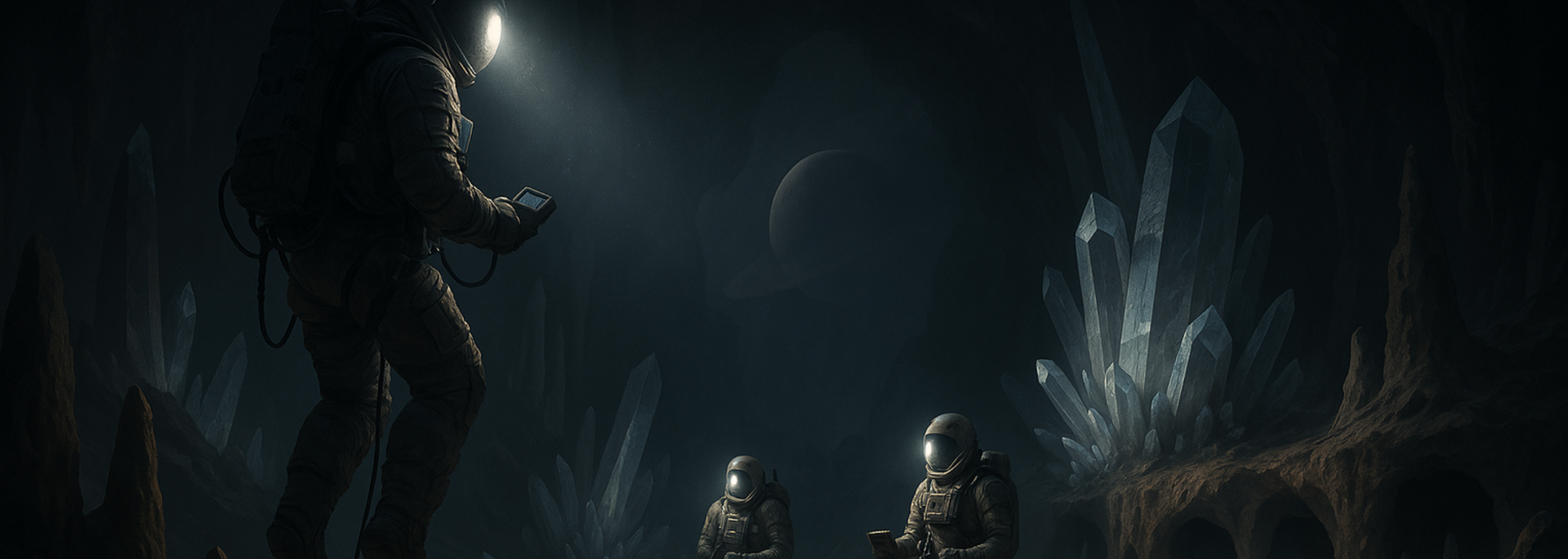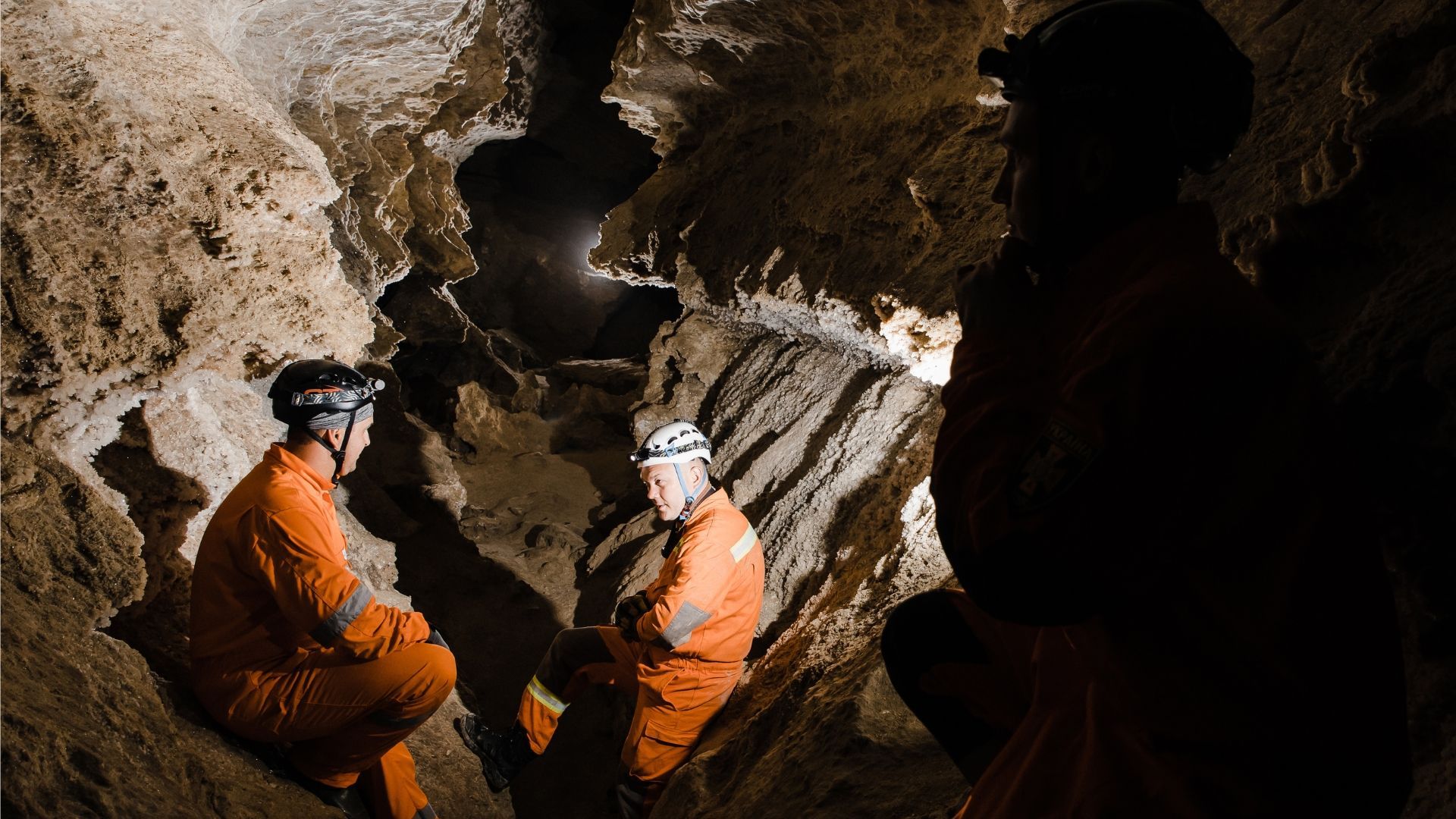Did you know there could be caves in space? Learn about them and discover our Cosmic Adventures events.

Caves aren't just cool places to explore here on Earth. Scientists have discovered that other planets and moons might have them, too.
These alien caves could hold secrets about life on other planets or even give our brave astronauts a place to shelter while they explore in the future.
Join us on our space adventure to learn about some of the most awesome caves in outer space. Who knows, maybe it will inspire you to become one of our Cosmic Adventurers here at our ancient caves in Yorkshire…
How do caves form on other planets?
Let's start with the basics, shall we?
Caves on Earth are usually formed when rainwater (which is slightly acidic) gets through cracks in rock and dissolves it. After many years, this creates the hollow spaces and passages we know as caves.
They most commonly form in areas with lots of limestone. That includes our home, the Yorkshire Dales. Like many other caves, Stump Cross Caverns was carved out of the local limestone by running water over thousands and thousands of years.
Caves can also be formed by molten lava, crashing waves, ice and even oil-eating bacteria.
Even though the conditions are very different on planets like Mars and the satellites that spin around them, scientists believe that caves in space form in a similar way to those here on Earth.
How do we know there are caves on other planets?
Some people have jobs dedicated to researching caves – cool, right?
They're called speleologists – and some of them are very interested in caves in space (planetary caves). These clever folk can spot potential cave openings from millions of miles away.
Different types of caves in space
Lava tubes
On Earth, lava tubes form when molten rock flows out of a volcano and hardens on the surface while hot lava keeps moving underneath. When the lava drains away, it leaves behind a hollow tunnel. The big ones can look a lot like caves.
Mars, Venus and even our moon have ancient volcanoes, so scientists think they have huge lava tubes – much larger than any on Earth. Some could be big enough to fit whole cities inside, making them a possible home for astronauts in the future.
Did you know? The largest lava tube on Earth is in Hawaii and stretches for more than 20 miles Just imagine the kinds of alien cities that could be built in lava tubes on other planets…

Ice caves
Ice caves on Earth are created when glaciers melt from the inside. On frozen moons like Europa (which orbits Jupiter) and Enceladus (which orbits Saturn), underground oceans might create similar caves.
Scientists are excited about these because they could contain alien life. Yes – you read that right! If we found tiny microbes in these icy caves, it would be one of the biggest discoveries in the history of science.
Did you know? Europa's ice is about 15 miles thick. Beneath that ice, there's a huge liquid ocean. Sounds cold, right? It's probably warmer than you think because it's heated by the moon's core. Could it be hiding something even cooler than ice? Maybe creatures that glow in the dark?
Water caves
Ceres is the closest dwarf planet to Earth. It has a relatively tiny diameter of just 592 miles.
Through a telescope, Ceres might look like just a big space rock. However, it's hiding a secret – it was once full of water.
Scientists think that, long ago, water flowed under its surface, carving out tunnels and leaving behind hidden caves. They even referred to it as an "ocean world".
NASA's Dawn spacecraft spotted landslides, cracks and salty patches, which are clues that water was once there. If any of these caves still exist, they could be some of the best places to search for signs of alien life.
Did you know? The water on Ceres may have been salty, just like Earth's oceans. If tiny alien microbes ever lived there, they might have been swimming in a giant underground saltwater cave.
Why are space caves important?
Caves on other planets could tell us a lot about the history of those worlds. They might hold ancient rocks that reveal what the planet was like millions of years ago, or even signs that life once existed there.
Here are some reasons why space scientists are so excited about exploring them.
1. They could provide safe shelter for astronauts
Future space explorers might live in caves on the Moon or Mars, where they would be protected from deadly radiation and extreme temperatures. Caves could offer a natural, ready-made shelter from the harsh surface conditions, allowing astronauts to set up camp without building structures from scratch.

2. Aliens might live within them
Scientists reckon planets with water or ice could be more likely to hide secret lifeforms. Microbes on Earth survive in deep caves with no sunlight, so it's not a stretch to think something similar might be possible on other planets. Scientists hope that deep, dark caves could hold clues about how life might exist under extreme conditions. It's like searching for treasure hidden underground.
3. They could conceal underground resources
Some space caves could contain goodies like ice and minerals that astronauts could use for fuel and building materials – or even to drink. For example, if astronauts could get to the ice beneath the surface of Mars, they could melt it for water. That would make living on the planet a little easier!
How do we explore caves in space?
Sending people to explore alien caves is hard – not to mention scary! That's why scientists are designing special robots to do the job.
1. Robot rovers
We've already built surface rovers that roam the Martian landscape. And now, scientists are building other robotic rovers designed to explore tunnels and climb rocky surfaces. These could help scientists explore cave entrances and tunnels safely, beaming back data about what's inside.
2. Snake-like robots
Imagine flexible robots that could slither through small gaps and reach places where humans or bigger rovers can't. These would be perfect for exploring alien caves with tricky entrances to discover their hiss-tory.
3. Drones
These drones would fly in and explore the high ceilings of lava tubes or other large cave systems. Once inside, they could create 3D maps to help scientists understand what's lurking inside.
Ready to explore space?
Know a little astronaut in the making? If they've enjoyed learning about space caves today, they're going to love our Cosmic Adventurers events here at Stump Cross Caverns.
They'll blast off into the stars and explore space in an exciting and educational way. They'll learn about the planets of the solar system, get tips on spotting constellations and take part in some creative activities. It's pure, hands-on science fun.
Sessions last one hour and take place from 2 PM to 3 PM every day throughout April 2025. Book your spot today and get ready for a journey that's truly out of this world!


Stump Cross Caverns
Greenhow Hill
Pateley Bridge
Yorkshire
HG3 5JL
All Rights Reserved | Stump Cross Limited
Crafted with creativity and marketing savvy by My Digital Hero

Stump Cross Caverns
Greenhow Hill
Pateley Bridge
Yorkshire
HG3 5JL
01756 752780
enquiries@stumpcrosscaverns.co.uk
01756 752780
enquiries@stumpcrosscaverns.co.uk
All Rights Reserved | Stump Cross Limited
Stump Cross Caverns
Greenhow Hill
Pateley Bridge
Yorkshire
HG3 5JL












